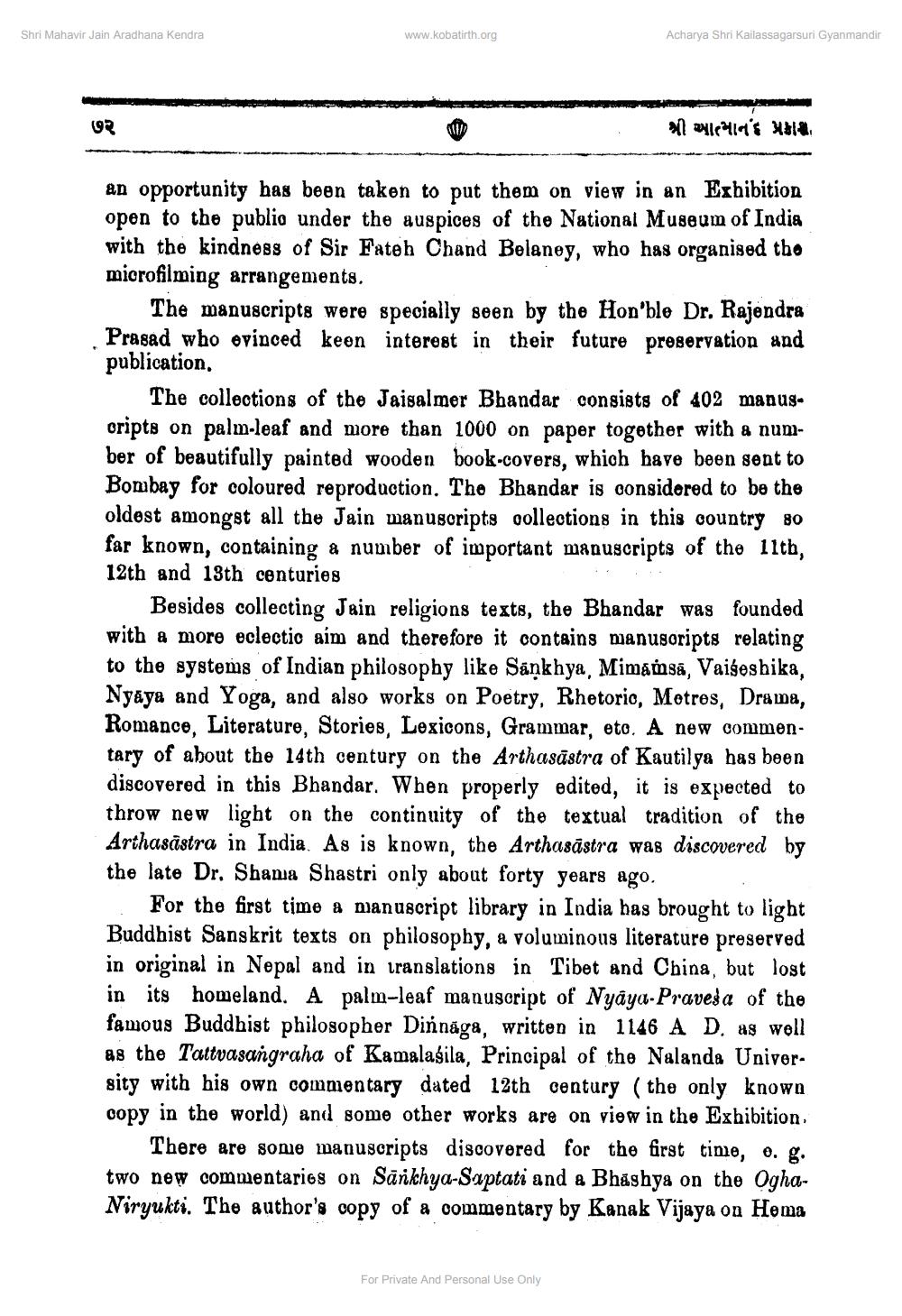Book Title: Atmanand Prakash Pustak 049 Ank 05 Author(s): Jain Atmanand Sabha Bhavnagar Publisher: Jain Atmanand Sabha Bhavnagar View full book textPage 6
________________ Shri Mahavir Jain Aradhana Kendra www.kobatirth.org Acharya Shri Kailassagarsuri Gyanmandir 2 શ્રી આત્માનંદ પ્રકાશ an opportunity has been takon to put them on view in an Exhibition open to the public under the auspices of the National Museum of India with the kindness of Sir Fateh Chand Belaney, who has organised the microfilming arrangements. The manuscripts were specially seen by the Hon'ble Dr. Rajendra Prasad who ovinced keen interest in their future preservation and publication. The collections of the Jaisalmer Bhandar consists of 402 manusoripts on palm-leaf and more than 1000 on paper together with a number of beautifully painted wooden book.covers, which have been sent to Bombay for coloured reproduction. The Bhandar is considered to be the oldest amongst all the Jain manuscripts collections in this country so far known, containing a number of important manuscripts of the 11th, 12th and 13th centuries Besides collecting Jain religions texts, the Bhandar was founded with a more eclectic aim and therefore it contains manusoripts relating to the systems of Indian philosophy like Sankhya, Mimamsa, Vaiseshika, Nyaya and Yoga, and also works on Poetry, Rhetorio, Metros, Drama, Romance, Literature, Stories, Lexicons, Grammar, eto. A new commentary of about the 14th century on the Arthasāstra of Kautilya has been discovered in this Bhandar. When properly edited, it is expected to throw new light on the continuity of the textual tradition of the Arthasāstra in India. As is known, the Arthasāstra was discovered by the late Dr. Shana Shastri only about forty years ago. For the first time a manuscript library in India has brought to light Buddhist Sanskrit texts on philosophy, a voluminous literature preserved in original in Nepal and in translations in Tibet and China, but lost in its homeland. A palm-leaf manuscript of Nyaya-Pravesa of the famous Buddhist philosopher Dinnāga, written in 1146 A D. as well as the Tattvasangraha of Kamalasila, Principal of the Nalanda University with his own commentary dated 12th century (the only known copy in the world) and some other works are on view in the Exhibition, There are some manuscripts discovered for the first time, o. g. two new commentaries on Sārkhya-Saptati and a Bhashya on the OghaNiryukti. The author's copy of a commentary by Kanak Vijaya on Hema For Private And Personal Use OnlyPage Navigation
1 ... 4 5 6 7 8 9 10 11 12 13 14 15 16 17 18 19 20
